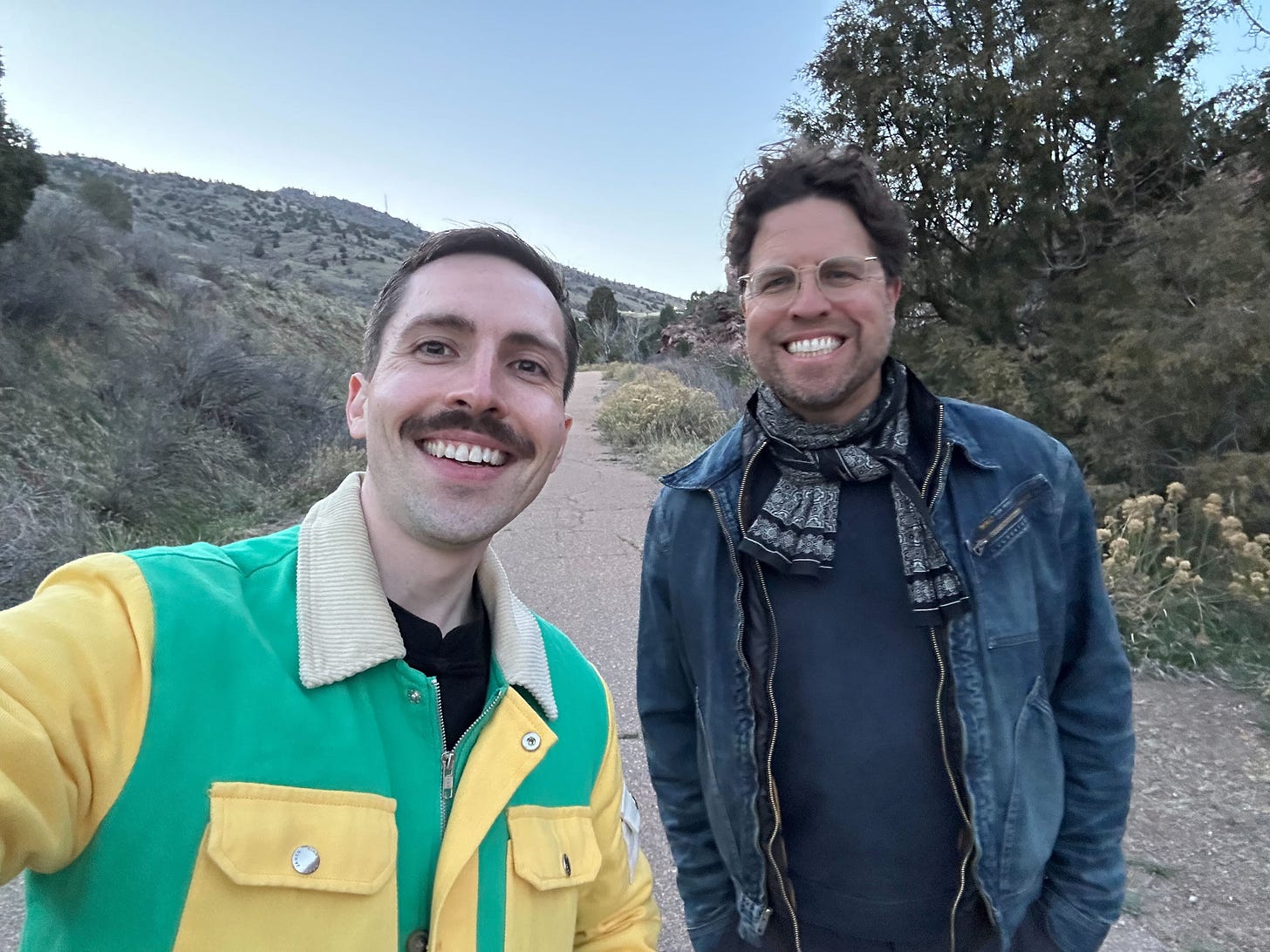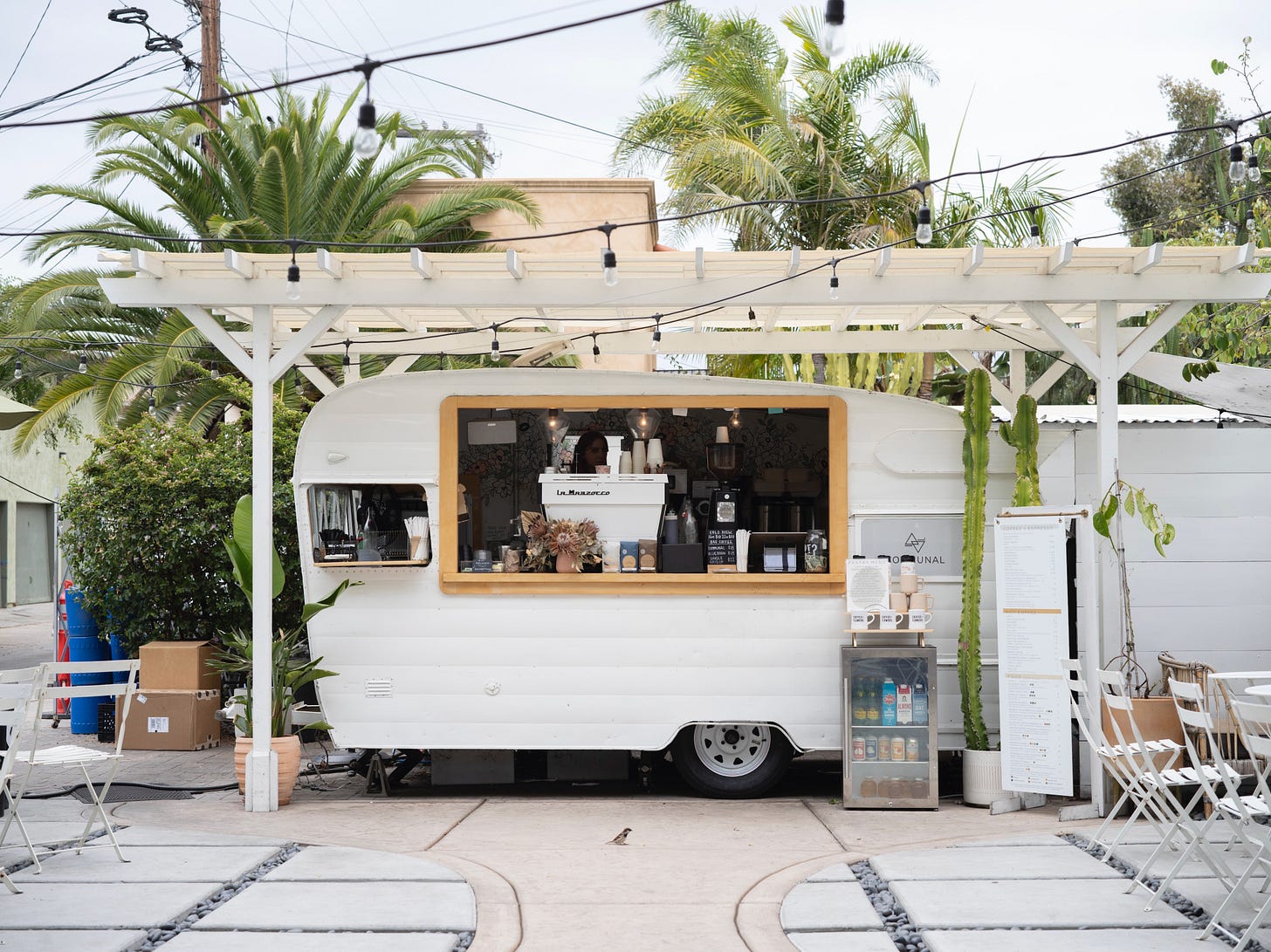Primary Care (with taste)
The intersection of technology, hospitality, and human-centered design
Meaningful connections have the power to change everything. My own perspective on how technology and intuitive product design can reshape human behavior was deeply influenced by Jay Parkinson, MD, MPH – a pioneer whose work in virtual primary care set the standard we see today.
Right now, an incredible community of innovators is tackling healthcare's toughest challenges. If you're one of these builders, we want to connect with you. Apply here to join Jay and me for an immersive five-day retreat in the Colorado mountains this June. Spots are limited to 10 guests for this unique opportunity to dive deep, share knowledge, and connect with peers and mentors.
Primary care physicians have range. We intuit the problems worth solving. The first road block for builders is navigating distribution challenges. Much has been written about this, and there are case studies and playbooks to pour over. What isn’t captured anywhere is how to trail blaze with taste. I asked Jay if that is even possible in primary care – and if so, what corner of the world will it come from?
Next are musings on “taste” by Jay Parkinson
Taste is something I've grappled with for decades, a bit unknowingly. I've always been a visual person. I often think in images. Photography is something I've been able to use to express my taste. I appreciate balance from symmetry and simplicity and light and the unexpected look on the subject’s face and all the things associated with an image you'll hopefully remember forever.
And then I've come to realize there's some overlap with the way I think about elegance and simplicity in how I think about experiences. We've all been to a restaurant that just knocks your socks off. Everything is on point— from the second you walk in, until the moment you sit down, to the visit to the restroom to wash your hands, to the food, to the farewell. You walk out knowing that was one for the books. TMI, but I think restrooms in restaurants are the window into the soul of the place, similar to our retinal vasculature. It could easily be the weakest link, but if every detail in the restroom is on point, you can tell the designer and visionary for the place is obsessed with the entirety of the experience.
There's something else about an experience like this. It feels unique. It looks unique. The food tastes like no other. And that's the magic. You can replace a restaurant with any type of service— coffee shop, buying a car, buying tires, you name it. Any experience can be magically memorable if the designer cares enough about designing the touch points and hiring the right people to make the vision come alive.
The Homogenization of Experience
Essentially, the designers of these experiences are creating art with time and place. We can all envision the Mona Lisa or Starry Night or Andy Warhol's Campbell's Soup. Experience designers are doing the same thing as these artists— branding your brain with a memory.
And then I listened to an Ezra Klein interview with Kyle Chayka, a staff writer at The New Yorker, who wrote a book called Filterworld. Kyle talks about traveling the world, in need of his daily coffee:
"It was just this strange, uncanny experience I was having that as I traveled around the world doing these freelance magazine assignments, I would land in a particular city, whether that was Tokyo or L.A. or Berlin or Beijing, and I always managed to find a particular style of coffee shop. It was this minimalist box of a cafe with white subway tiles on the walls and midcentury Scandinavian furniture and handmade ceramic mugs with nice cappuccinos in them. And this was not the work of a parent company. It wasn't a Starbucks. It wasn't a global chain. Instead, it was all of these completely independent coffee shops, baristas, entrepreneurs, who had decided to mold themselves into the same aesthetic. So I started wondering what connected them all together. And my conclusion was that digital platforms, whether Instagram or Yelp or Google Maps, were feeding this series of cafes to me as a recommendation. Like, my taste was being evaluated, and then I was getting recommended the same minimalist cafe over and over again, and I was being driven to these places by the platforms themselves."
The internet seems to be putting us in a box (I guess the word is more "persona") and using algorithms to amplify what that persona is expected to like. The almighty algorithm is turning us into good little consumers— it's almost communist, for capitalism's sake.
Applying Taste to Primary Care
This got me thinking about primary care. Has the algorithm or the groupthink done that to us, the innovators of healthcare? What are the subway tiles of primary care? Or the midcentury Scandinavian furniture? And, of course, you'll find both of those in One Medical offices, proving the coffeeshop-ification of primary care.
For some reason, and I can't really tell you why, I've been obsessed with chasing anything exceptional that gets burned into my brain as a memory. I guess that's why I lived in NYC for 16 years, because New York was the densest concentration of these kinds of things. I didn't really think about it or know what I was doing until Kyle Chayka defined taste in this way:
Taste is a process of collection. Like you're grabbing on to the little voices and artists and touchstones that make you who you are and give you your sense of self. You're drawn to something without knowing why.
I've built some pretty cool primary care experiences over the last 18 years. A few have been novel experiences nobody had ever seen before. The things that tie them all together is this innate sense of art meets business. Business is financial talent. Art is burning exceptionally positive memories into brains. It's making people feel a way they'll never forget.
In a lot of ways, I was the Creative Director of the primary care experiences my teams were building. But what does that even mean?
What does a Creative Director for Primary Care do?
They have an intuitive sense of what patients want
And what do they want? They want to communicate, easily. Because all healthcare is is communication. Weirdly enough, they don’t always want to be their healthiest, they just want to be heard and validated. Again, that’s communication.
They have an intuitive sense of what clinicians want
They want freedom to be their best. They want an active, evolving toolkit that increasingly makes all aspects of their job as easy as possible. It's literally that simple.
They steal from others
Creative primary care steals from exceptional experiences typically found outside of healthcare. It's the way Apple helps you fix a broken MacBook— first with self-helpy online content, then, stepping it up to real time online chat, and, if necessary, in-person at the Genius Bar. Notice how that playbook works great for fixing broken health too. It's the way ChatGPT has a fascinating spoken conversation with you about anything, for as long as you want. It's the way you walk into your favorite coffee shop and every employee knows your name and they treat you like you're part of their family. It's the way Meta knows a thousand times more information about you than a traditional PCP. It's a process of collection. It's paying attention to what's great in the world and constantly asking yourself "how does this apply to delivering exceptional primary care?"
They have an intuitive sense of knowing when something feels iconic, long before the data proves it
Think about Virgil Abloh, Rick Rubin, Steve Jobs, etc. They used certain kinds of cherry-picked data to make iconic things, via their gut. People like that have an innate conviction based on their intuitive understanding of humans and what they like. And they put their vision through their own personal filter to create category-smashing things. Lately, Product has been hijacked by data. Product leaders gather data and use that data to build or improve user experiences, disregarding taste and vision. That strategy is the best way to build incremental improvements. And when you think about it, in the early days of a company, Product's role is to launch, find product market fit, and drive value. That's super creative. And as the company matures and is forced to drive revenue, it's Product's role to drive enshittification. Primary care doesn't need enshittification, it needs a fundamentally new product.
They know how to create experiences that feel good when folks use it
Let's face it, medical care is never fun. How many times have folks ever said, "goodness gracious, going to my doctor was just so easy and pleasant!" It's hard to define taste, just as it's hard to define a feel-good experience. It's not "From a scale of 0 to 10, how likely would you recommend blah, blah, blah?" That feeling I’m talking about is etched into your mind. It's kind of like eating a steak at Peter Luger's in Brooklyn— it ruins all steaks you'll ever have the rest of your life because they'll never live up. That's how we want our patients (and clinicians!) to feel when they use creative primary care.
They gather the right talents
You need a Creative Director to define the vision. Remember, they have an intuitive understanding of what's iconic. You need the artist to design the visual identity. You need the operational wizard to design and iterate on the workflows. You need the hospitality expert to design how the brand talks and how that makes users (both patients and clinicians) feel. You need the clinician, who intuitively understands how clinical policies make patients feel, to define what care gets delivered for whom. You need the Product designer to interpret the mission into a UX that's immediately obvious. You need the writer who knows how to communicate the vision. And you need a business development talent that intuitively understands how to acquire populations and individuals.
They choose their target
I can’t think of an experience designed for every type of person imaginable that instills joy in us all. Great experiences pick who they want to impress, design the experience around that persona, and deliver. The problem with primary care is we take all-comers. It’s so general, it works for nobody. Give us your sick and we’ll do our thang. That’s why I’m excited about primary care being built around the unique experiences of people of size; LGBTQIA+ folks, and latinos. You even see this in the Hotel Trade primary care centers in NYC caring for people who work in the hotel industry. Choosing who these services want to care for gives that population a home they’ll never leave. People love brands that get them— it’s our innate tribalism. The brand doesn’t have to be high end. It just has to have a target and an opinion.
And finally, they tie this all together
Almost like how a movie director's job is to help you escape to a whole new world, a creative director's job is to ensure every moving part functions in a way that makes users say "wow, that whole thing, whatever it was, ain't never seen it before...that was delightful."
The Future of Tasteful Primary Care
But I get it. I've been around the block long enough. Pies in skies and stuff. What does this even mean? Does having taste look like One Medical? Or Biograph? Do they have "taste?" If so, is taste just a veneer on appointments and patient portals and tests?
I believe primary care can absolutely have taste. It emerges when we stop trying to simply improve the existing system and instead reimagine it entirely. Tasteful primary care will come from the intersection of technology, hospitality, and human-centered design. It will feel as different from today's standard primary care as an exceptional restaurant feels from a fast food chain.
The future of primary care with taste isn't just about prettier offices or more convenient apps—it's about creating healthcare experiences that people actually want to engage with, that clinicians find fulfilling to deliver, and that solve problems in ways that feel almost magical. It's about building something that makes people say, "I never knew healthcare could feel like this."
If you are building in healthcare and want to dig deeper into topics like this with other kindred spirits, you should apply to join our next retreat. Know someone who’d be a good fit? Feel free to share this opportunity with them.








great read jay - thinking about how taste is and has always been key to building unique products and services. it requires discernment, tradeoffs, and opinions - things investor types get scared of. you also can't really scale it - taste loses its power at scale and sometimes over time